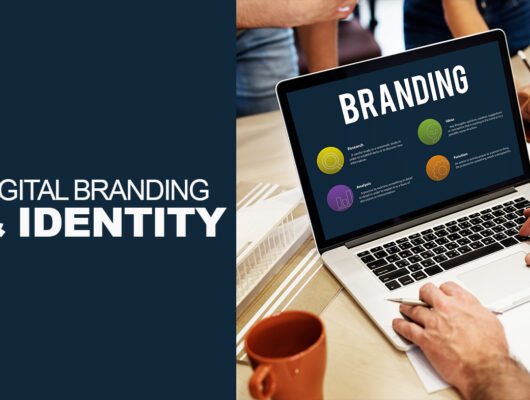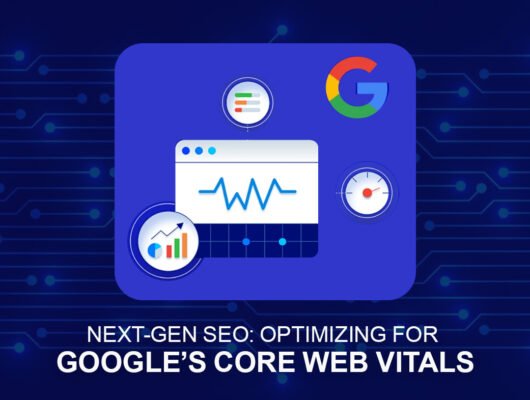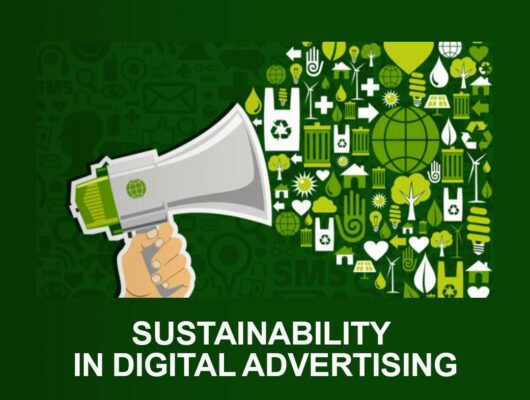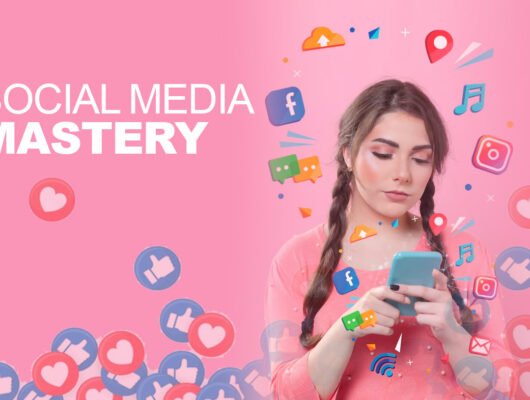Introduction to Graphic Design Trends
Graphic design trends play a pivotal role in shaping visual communication. As the industry continuously evolves, these trends reflect shifts in technology, culture, and consumer preferences. Designers must remain vigilant in recognizing these changes, as the relevance of their work often hinges on the incorporation of contemporary styles and methods. By understanding the latest trends, designers can create compelling and visually appealing works that effectively capture the audience’s attention.
The significance of graphic design trends is manifold. For designers, staying updated with current trends ensures their work does not become stale or outdated. They serve as a source of inspiration, helping creatives to push boundaries and explore innovative ideas. Moreover, trends can enhance the viewer’s experience; a fresh aesthetic resonates more deeply with an audience and encourages engagement. This is particularly crucial for businesses looking to establish a strong brand identity and connect with their target demographic.
From the rise of minimalism to bold typography and intricate illustrations, graphic design trends evolve to reflect societal changes. The integration of technology has also transformed how these trends manifest, with digital platforms influencing design choices significantly. For instance, responsive designs that adapt to various devices have become essential in the digital era, making it imperative for designers to think beyond traditional layouts.
Businesses, too, must keep abreast of these trends. Adapting to the latest graphic design developments not only helps in meeting consumer expectations but also enhances brand visibility. Trend-driven marketing campaigns are more likely to resonate with audiences, driving engagement and fostering brand loyalty. Therefore, both designers and businesses benefit greatly from understanding the significance of evolving graphic design trends and their implications in a rapidly changing visual landscape.
Bold Typography in Graphic Design
In 2023, bold typography has emerged as a pivotal trend within the realm of graphic design, serving as a powerful tool for capturing attention and effectively communicating messages. Designers are increasingly leveraging large, striking font styles to create visual hierarchies that draw the viewer’s eye, and instill a sense of urgency or importance. This trend not only enhances readability but also elevates the overall aesthetic of the design.
The essence of bold typography lies in its ability to stand out, allowing brands and businesses to convey their identity robustly. By utilizing oversized fonts, designers can create memorable impressions. For instance, in advertising campaigns, prominent headings coupled with eye-catching typographical elements have proven to enhance consumer engagement significantly. A notable example can be seen in digital billboards where brands utilize bold typography to ensure their messages resonate even in fast-paced environments.
Furthermore, the versatility of bold typography allows it to be integrated across various mediums, including print, digital, and social media platforms. In print media, magazines and brochures leverage bold font choices to highlight key information, thereby enhancing reader retention. On social media, bold typography can elevate posts by making them visually impactful, encouraging shares and interactions from the audience.
As the graphic design landscape continues to evolve, the integration of bold typography stands out as a testament to creative ingenuity. When applied thoughtfully, it can communicate brand values, evoke emotions, and influence perceptions. Overall, bold typography not only enriches designs but also empowers brands to connect meaningfully with their audiences, establishing a lasting impression that resonates in a competitive market.
Minimalism Meets Maximalism
As the graphic design landscape continues to evolve, the confluence of minimalism and maximalism has emerged as a prominent trend in 2023. Minimalism, characterized by its clean lines, simple forms, and a focus on essential elements, has long been a staple in the design world. Conversely, maximalism embraces complexity, richness, and vibrancy. The integration of these two seemingly opposing aesthetics is creating a new wave of innovations in graphic design.
This intriguing juxtaposition allows designers to leverage the strengths of both styles. By combining minimalism’s clarity with the boldness of maximalist elements, graphic designers are able to create compositions that are at once visually striking and easy to navigate. Minimalist components, such as ample white space and restrained color palettes, serve as a foundation, while vivid colors and dynamic patterns add depth and energy to the designs.
The blending of these two design philosophies challenges conventional principles by breaking away from traditional frameworks of what constitutes effective graphics. Designers harness the power of simple visual cues alongside exuberant motifs, creating layered narratives that resonate with diverse audiences. The result is a harmonious balance that engages viewers both intellectually and emotionally, thus enhancing the overall user experience.
Additionally, this trend often reflects a broader cultural shift toward complexity in our increasingly chaotic world. As consumers are bombarded with information, graphic design that seamlessly marries minimalism and maximalism can cut through this noise, offering clarity without sacrificing impact. Such design captures attention while still facilitating easy comprehension of the message being conveyed. In this constantly shifting environment, graphic designers are challenged to innovate continuously, encouraging the exploration of uncharted territory in visual communication.
Sustainability in Graphic Design
In recent years, the graphic design industry has witnessed a significant shift towards sustainability, reflecting a broader societal focus on environmental conservation. This trend is characterized by the increasing incorporation of eco-friendly practices into design processes. Designers are now prioritizing the use of recycled materials, providing a more sustainable alternative to traditional resources. By selecting paper that is manufactured from recycled content or utilizing biodegradable inks, graphic designers are able to significantly reduce their environmental footprint while still producing visually appealing work.
Moreover, many graphic designers are actively seeking partnerships with brands that prioritize sustainability. This collaboration extends beyond the use of eco-friendly materials; it involves promoting products and services that are designed with environmental consciousness in mind. By doing so, these designers not only contribute to the promotion of sustainable practices but also enhance their own brand image as socially responsible professionals. The result is a collaborative effort that not only meets client needs but also fosters positive consumer perceptions regarding sustainability.
The impact of this trend on consumer behavior cannot be understated. As eco-consciousness grows among consumers, they increasingly gravitate towards brands that reflect their values. Studies have shown that consumers are more likely to support companies that actively engage in sustainable practices, thereby driving sales for brands that collaborate with graphic designers focused on sustainability. This growing consumer awareness compels companies to adopt more environmentally-friendly approaches, creating a ripple effect throughout the industry.
Ultimately, the drive for sustainability in graphic design is not merely a trend but a necessary evolution within the industry. As designers continue to innovate and find new ways to merge creativity with eco-friendliness, the long-term benefits for both the environment and the market will become increasingly apparent.
3D and Motion Graphics Revolution
The realm of graphic design is undergoing a significant transformation, with 3D design and motion graphics at the forefront of this evolution in 2023. Technological advancements have democratized these techniques, making them more accessible to designers of varying skill levels. Software and tools that once demanded extensive training are now user-friendly, enabling graphic designers to incorporate three-dimensional elements and animations effortlessly into their creative projects.
3D design has moved beyond niche applications and is now a staple in branding and advertising. Companies utilize 3D elements to create visual narratives that resonate more effectively with their target audiences. For example, product animations that showcase an item from multiple viewpoints allow potential customers to engage with the product in a dynamic manner, fostering a deeper connection than traditional static images can achieve. Brands are leveraging augmented reality (AR) to enhance their marketing strategies, allowing consumers to interact with products in 3D via mobile applications.
Moreover, motion graphics have significantly gained traction as a storytelling medium. Graphics that include animated sequences capture attention more effectively than static visuals, making them ideal for social media and online advertising. Short video clips that incorporate 3D graphics create immersive experiences that encourage viewer retention. Platforms such as Instagram and TikTok have accelerated the demand for these lively visuals, prompting designers to innovate continually.
The ongoing integration of 3D and motion graphics within branding strategies signifies a paradigm shift in how messages are conveyed visually. As designers continue to experiment with these technologies, the boundary between graphic design and digital experiences is increasingly blurred, indicating a promising trajectory for future creative expressions. In conclusion, the rise of 3D design and motion graphics is reshaping the landscape of graphic design, presenting new opportunities and challenges for the industry.
Vibrant Color Palettes and Gradients
In 2023, the graphic design landscape is witnessing a significant shift towards the use of vibrant color palettes and dynamic gradients. Designers are increasingly drawn to bold hues that not only captivate the audience’s attention but also evoke a range of emotions. This trend reflects a broader movement in the creative industry towards more expressive and engaging visuals, pushing boundaries beyond traditional color theories.
The application of vibrant colors allows designers to infuse their work with energy and personality. For instance, projects that employ vivid tones can create an atmosphere of excitement, joy, or even urgency. For example, a recent campaign by a renowned beverage company used bright oranges and electric blues to resonate with a youthful demographic, showcasing how color choice can directly influence brand perception.
Gradients, particularly those that blend contrasting colors, are also taking center stage. These smooth transitions between hues provide depth and layer to digital and print designs, helping to create a sense of movement and dimension. A noteworthy example is an award-winning website that effectively utilized a gradient background, transitioning from a rich purple to a sunny yellow, commanding attention while highlighting content in a unique way. This approach not only enhances aesthetic appeal but also guides viewers through the information presented.
Moreover, the emotional response elicited from viewers can be intensified through color theory principles. For instance, combining shades of green and blue can impart tranquility, while fiery reds and yellows can generate excitement. In corporate branding, these decisions are pivotal; companies are now more aware that their color choices impact consumer psychology and engagement significantly.
In conclusion, embracing vibrant color palettes and gradients is not just a fleeting trend but a powerful tool that shapes graphic design in 2023. As designers continue to explore this spectrum, their ability to connect with audiences on an emotional level will undoubtedly elevate the visual landscape across various platforms.
Retro and Nostalgic Design Elements
The resurgence of retro and nostalgic design elements in graphic design has become a significant trend in 2023. These design aesthetics tap into the collective memories and experiences of consumers, creating an emotional bond that resonates deeply. As society continues to navigate a fast-paced digital world, many individuals find comfort in familiar styles and themes associated with previous decades. This emotional connection fuels the popularity of retro elements, making them a powerful tool for designers seeking to engage audiences.
One of the primary reasons behind the success of retro graphic design lies in its ability to evoke a sense of nostalgia. Consumers often feel drawn to visuals reminiscent of their childhood or formative years, provoking feelings of warmth and familiarity. This inclination toward the past is not only seen in graphic design but also evident in various aspects of modern culture, including fashion, music, and entertainment. The interplay between nostalgia and modernity effectively creates a bridge that appeals to various demographics, particularly Millennials and Gen Z, who are eager to connect with the aesthetics of earlier times.
Graphic design projects that successfully incorporate retro elements often leverage bold color palettes, vintage typography, and iconic imagery to capture the essence of a bygone era. For example, advertisements utilizing retro color schemes reminiscent of the 70s, 80s, or 90s find favor among audiences who associate these colors with joy and a carefree spirit. Additionally, design inspiration drawn from vintage packaging, old-school logos, or classic film posters reinforces the trend, as these visuals evoke cherished memories and experiences.
In conclusion, the adoption of retro and nostalgic design elements reflects a growing desire among consumers to reconnect with their past. This trend not only enriches contemporary graphic design but also enables brands to establish authentic connections through visuals that resonate deeply, enhancing their overall appeal in an increasingly competitive market.
Custom Illustrations and Hand-drawn Elements
In recent years, the integration of custom illustrations and hand-drawn elements has become a prominent trend within the realm of graphic design. Brands are increasingly tapping into this approach to infuse a distinct personality into their visual narratives. The uniqueness of hand-drawn graphics stands in stark contrast to the ubiquity of stock images, thereby allowing brands to forge a stronger connection with their audience. Designers are recognizing that custom illustrations can tell a story, convey emotions, and ultimately reflect the brand’s values.
The allure of custom illustrations lies not only in their aesthetic appeal but also in their ability to humanize a brand. For instance, companies like Mailchimp have effectively utilized whimsical illustrations to create a friendly and approachable brand identity. These unique hand-drawn elements resonate with the audience, providing a sense of originality that speaks to their desires for authenticity and creativity. In an era where consumers are inundated with generic visuals, custom graphics stand out by adding a personal touch that can foster loyalty.
Moreover, brands like Airbnb have embraced hand-drawn map illustrations to represent the destinations in an engaging and visually rich manner. This prime example highlights how custom illustrations can enhance user experience by presenting information in a fun and accessible format. Not only do these elements add vibrancy to their designs, but they also serve the functional purpose of helping customers visualize their journey. As graphic design trends evolve, the incorporation of hand-drawn elements will likely continue to play a critical role in defining brand uniqueness.
Ultimately, the trend of custom illustrations and hand-drawn graphics illustrates the industry’s shifting focus toward personalization and creativity. By leveraging these artistic elements, brands can create engaging identities that resonate with their audiences on a deeper level, paving the way for meaningful connections and enduring brand loyalty.
Conclusion: The Future of Graphic Design Trends
As we reflect on the latest creative graphic design trends of 2023, it becomes evident that the evolution of this field is marked by a blend of technological advancements and shifting cultural paradigms. The discussed trends, including minimalist design aesthetics, the rise of 3D elements, and sustainability-driven practices, each contribute to a more cohesive understanding of contemporary design. These trends not only showcase the current landscape but also signal a forward momentum that is likely to influence future practices.
One significant observation from 2023 is the increased emphasis on inclusivity and representation in design. As the industry moves toward embracing diversity, we can anticipate that future graphic design trends will prioritize authenticity and varied perspectives. Designers are encouraged to explore these dimensions, adapting their approaches to cater to a broader audience. This embrace of varied voices serves as both a reflection of societal changes and an opportunity for creativity in the design process.
Another important aspect to consider is the rapid advancement in technology. Tools powered by artificial intelligence and augmented reality are reshaping how designers conceptualize and execute their work. It is crucial for graphic designers to remain adaptable and open to experimenting with these increasingly sophisticated tools. The potential for innovation is vast, prompting a continual re-examination of traditional methods and the exploration of new avenues for expression.
Ultimately, the future of graphic design trends will hinge on a willingness to blend creativity with technology while remaining responsive to societal shifts. By fostering an environment of experimentation and adaptation, designers can push the boundaries of what is possible, paving the way for unique and impactful visual narratives in the years to come.







